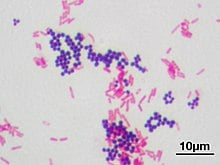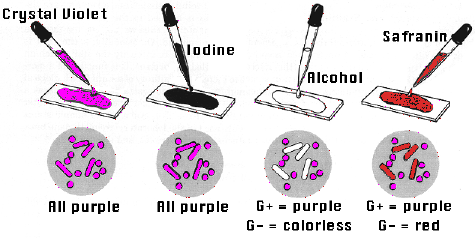- Joined
- Aug 10, 2011
- Messages
- 90
- Reaction score
- 7
#68 After being subjected to the Gram staining procedure, Gram-positive and Gram-negative cells show which of the following colors, respectively?
answer is D. Blue;red
The solution says alcohol takes out color from gram-negative because of its lower peptidoglycan content...are we expected to know that alcohol does this? (below is the word by word answer solution for what alcohol does)
"In Step 3 alcohol is added and acts to decolorize the cells. However, only the Gram-negative cells are decolorized by the alcohol. The Gram-positive cells remain purple. This is due to the thickness of the peptidoglycan layer of the Gram-positive cells. Alcohol tends to dehydrate this layer. thus making any pores within the layer itself rather small. These small pores hinder the passage of the crystal violetiodine
complex during the extraction process. Since the crystal violet-iodine complex remains trapped in the peptidoglycan layer, Gram-positive cells still display a violet color at this stage. In Gram-negative bacteria the thin peptidoglycan layer does not significantly hinder the extraction process, and these cells therefore display no color (i.e., they are colorless) at this stage."
answer is D. Blue;red
The solution says alcohol takes out color from gram-negative because of its lower peptidoglycan content...are we expected to know that alcohol does this? (below is the word by word answer solution for what alcohol does)
"In Step 3 alcohol is added and acts to decolorize the cells. However, only the Gram-negative cells are decolorized by the alcohol. The Gram-positive cells remain purple. This is due to the thickness of the peptidoglycan layer of the Gram-positive cells. Alcohol tends to dehydrate this layer. thus making any pores within the layer itself rather small. These small pores hinder the passage of the crystal violetiodine
complex during the extraction process. Since the crystal violet-iodine complex remains trapped in the peptidoglycan layer, Gram-positive cells still display a violet color at this stage. In Gram-negative bacteria the thin peptidoglycan layer does not significantly hinder the extraction process, and these cells therefore display no color (i.e., they are colorless) at this stage."
Last edited:


